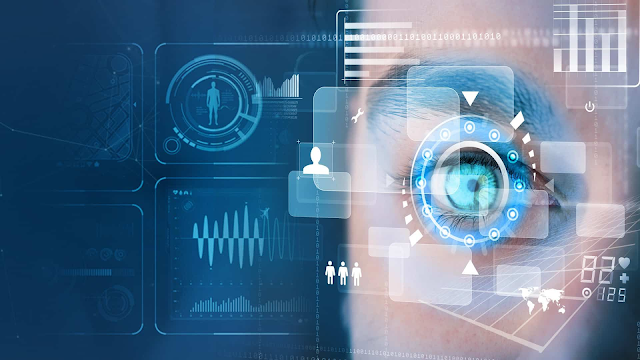Exploring Computer Vision: The Eyes of Artificial Intelligence
- Get link
- X
- Other Apps
We’re going to delve into an exciting field within Artificial Intelligence: Computer Vision. This technology allows machines to interpret and understand the visual world, enabling a wide range of applications from facial recognition to autonomous vehicles. Let’s explore what computer vision is, how it works, and it's incredible applications.
What is Computer Vision?
Computer Vision is a field of Artificial Intelligence that enables machines to interpret and make decisions based on visual input from the world. By using algorithms and models, computer vision systems can process and analyze images and videos to extract meaningful information. Think of it as giving machines the ability to see and understand visual data, similar to how humans do.
How Does Computer Vision Work?
Image Acquisition: The first step involves capturing visual data using cameras, sensors, or other imaging devices. This data can be in the form of images or video streams.
Image Processing: The raw visual data is processed to enhance its quality and extract relevant features. Techniques like filtering, edge detection, and noise reduction are applied during this stage.
Feature Extraction: Key features from the processed images are extracted. These features can include edges, corners, textures, and shapes that are important for identifying objects or patterns in the image.
Pattern Recognition: Using machine learning and deep learning algorithms, the system recognizes patterns and makes sense of the extracted features. This step involves training models on large datasets to learn how to identify and classify objects.
Decision Making: Finally, the system makes decisions or performs actions based on the recognized patterns. This could involve tagging objects in an image, identifying faces, or navigating an autonomous vehicle.
Applications of Computer Vision
Facial Recognition: One of the most well-known applications, facial recognition technology, identifies and verifies individuals by analyzing facial features. It’s widely used in security systems, smartphones, and social media platforms.
Object Detection: Computer vision systems can detect and classify objects within an image or video. This technology is used in various applications, including inventory management, quality control, and augmented reality.
Autonomous Vehicles: Self-driving cars rely heavily on computer vision to understand their surroundings. By analyzing visual data from cameras and sensors, these vehicles can detect obstacles, read traffic signs, and navigate safely.
Medical Imaging: In healthcare, computer vision aids in analyzing medical images such as X-rays, MRIs, and CT scans. It helps in early diagnosis, treatment planning, and monitoring disease progression.
Retail and E-commerce: Computer vision is used in retail for customer behavior analysis, automated checkouts, and inventory management. E-commerce platforms use it for visual search and product recommendations.
Surveillance and Security: Advanced surveillance systems use computer vision to detect and respond to suspicious activities, monitor crowds, and enhance public safety.
Agriculture: Computer vision aids in precision farming by monitoring crop health, detecting pests, and assessing soil quality. Drones equipped with cameras capture aerial images for analysis.
The Future of Computer Vision
The future of computer vision is bright, with continuous advancements in deep learning and neural networks driving its progress. Here are some potential future developments:
Improved Accuracy: Ongoing research aims to improve the accuracy and reliability of computer vision systems, making them even more effective in real-world applications.
Integration with IoT: Combining computer vision with the Internet of Things (IoT) will enable smarter devices and environments, from smart homes to industrial automation.
Healthcare Innovations: Enhanced computer vision capabilities will lead to better diagnostic tools, personalized treatment plans, and real-time health monitoring.
Environmental Monitoring: Computer vision will play a crucial role in monitoring environmental changes, wildlife conservation, and disaster management.
Conclusion
Computer Vision is revolutionizing the way machines interact with the visual world, bringing about significant advancements across various industries. By understanding how computer vision works and its diverse applications, we can appreciate its impact on our daily lives and the future...
Compiled By: Gaurav Bisht, Data Scientist...
- Get link
- X
- Other Apps




Comments
Post a Comment